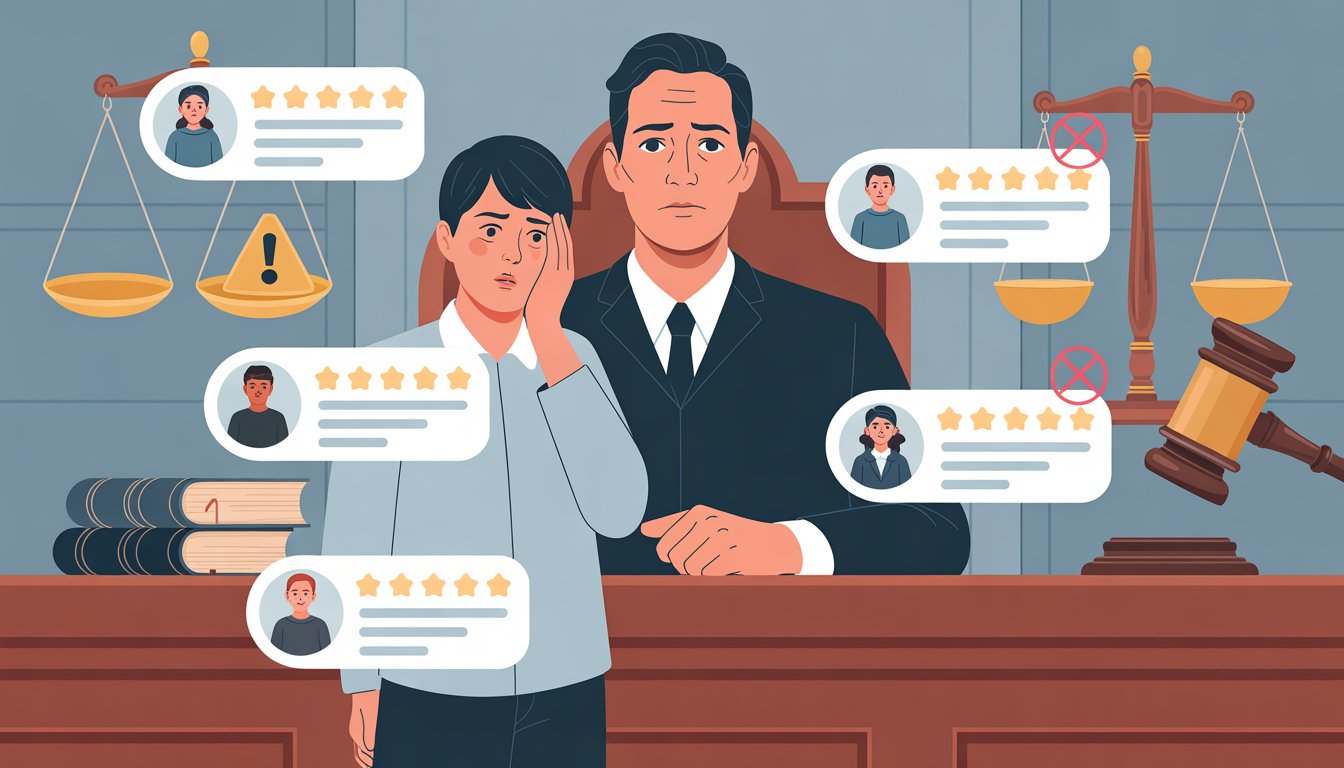Getting customers to leave reviews can feel like an uphill battle. Offering incentives might seem like the perfect solution.
You can incentivize customers to leave reviews, but it must be done carefully within platform guidelines and legal requirements. The key is understanding what works while avoiding the pitfalls that could harm your business.

Many review platforms have strict rules about incentivized reviews. Google prohibits incentives that mislead or influence review sentiment.
Amazon bans financial compensation for reviews entirely. Yelp forbids all incentivized reviews to keep feedback genuine.
Ethical incentive strategies exist. You can offer non-monetary rewards like discount codes or sweepstakes entries without violating platform policies.
The secret is making sure your incentives are not tied to positive reviews and that you ask for honest feedback from all customers.
Key Takeaways
- You can offer incentives for reviews if you follow platform rules and avoid paying for positive feedback only
- Non-monetary rewards like discount codes or sweepstakes work better than cash payments and reduce legal risks
- Focus on asking all customers for honest reviews rather than targeting only happy customers for feedback
Understanding the Value of Customer Reviews

Customer reviews directly impact how potential buyers view your business and make purchasing decisions. They serve as powerful tools for building trust while providing valuable insights that can improve your products and services.
How Reviews Influence Consumer Trust and Social Proof
Reviews act as digital word-of-mouth recommendations that potential customers rely on before making purchases. When people see that others have bought and used your products, it reduces their fear of making a bad decision.
Studies show that 92% of consumers read reviews before buying. This means your reviews directly influence whether someone chooses your business over competitors.
Social proof works because people follow what others do. When customers see positive feedback from real buyers, they feel more confident about purchasing.
Reviews create a sense of community around your brand. The number of reviews matters too.
Products with more reviews get chosen more often than those with fewer reviews, even if the ratings are similar. Trust builds faster when reviews include specific details.
Generic praise like "great product" carries less weight than detailed feedback about features, quality, or customer service experiences.
Customer Feedback as a Business Growth Tool
Reviews give you free market research about what customers like and dislike about your products or services. This information helps you make better business decisions without paying for expensive surveys.
You can identify common complaints and fix problems before they drive away more customers. Many businesses discover product flaws or service gaps through review feedback.
Positive reviews highlight your strengths. When multiple customers praise the same features, you know what makes your business stand out.
You can then emphasize these strengths in your marketing. Reviews also help you understand your target audience better.
Customer language in reviews shows you how real people describe your products, which can improve your marketing copy. Search engines use reviews to rank businesses higher in local search results.
More reviews can lead to better visibility and more customers finding your business online.
Impact of Positive and Negative Reviews
Positive reviews boost sales and customer confidence. They act as testimonials that convince hesitant buyers to make purchases.
A single positive review can influence dozens of potential customers. These reviews also improve employee morale when staff members see customers appreciate their work.
Happy employees often provide better service, creating more positive experiences. Negative reviews offer improvement opportunities when you respond professionally and fix problems.
Potential customers watch how you handle complaints, and good responses can actually increase trust. Mixed reviews often appear more trustworthy than only positive ones.
Customers expect some negative feedback and become suspicious when they only see perfect ratings. Both types of reviews provide valuable data about customer expectations and experiences.
You can track patterns over time to see if changes you make actually improve customer satisfaction. The key is responding to all reviews promptly and professionally, showing that you value customer feedback and care about their experiences.
What Are Review Incentives?

Review incentives are rewards businesses offer to encourage customers to share their experiences with products or services. These programs work by giving customers something valuable in exchange for taking time to write feedback.
Types of Incentives: Discounts, Loyalty Points, and Monetary Rewards
Discounts are the most common type of review incentive. You might receive a percentage off your next purchase or a fixed dollar amount discount code.
Many businesses send follow-up emails offering 10-15% off future orders when you leave a review. This approach works well because it drives both feedback and repeat purchases.
Loyalty points integrate review requests into existing reward programs. You earn points that can be redeemed for products, services, or exclusive perks.
Companies like Sephora use this method by adding points to your account when you write detailed product reviews. The points accumulate over time and provide ongoing value.
Monetary rewards include gift cards, cashback, or direct payments. Some businesses offer small cash amounts or store credit for honest feedback.
Amazon's Vine program gives selected reviewers free products in exchange for detailed reviews. Other companies provide gift cards ranging from $5 to $25 for comprehensive feedback.
Defining Incentivized Reviews Versus Organic Reviews
Incentivized reviews are written specifically because a reward was offered. You receive something of value in exchange for your time and feedback.
These reviews must be disclosed to readers. Platforms require labels like "received free product" or "incentivized review" to maintain transparency.
Organic reviews happen naturally without any external motivation. You write them purely based on your experience with no expectation of reward.
Organic feedback tends to be more balanced and reflects genuine customer sentiment. These reviews often include both positive and negative aspects of your experience.
The key difference is motivation. Incentivized reviews might lean more positive since you received something valuable from the company.
Potential Benefits of Incentivizing Customer Reviews
Offering incentives for reviews can help businesses collect more feedback while building stronger relationships with customers. These programs often increase participation rates and provide valuable insights for both companies and future buyers.
Increasing Review Volume and Engagement
Incentives directly address one of the biggest challenges businesses face: getting customers to leave reviews in the first place. Many satisfied customers simply forget to share their experiences or don't prioritize writing reviews.
Financial incentives boost participation rates significantly. Research shows that offering rewards like discounts or loyalty points increases the number of reviews you receive.
This helps you break through the "review zero" barrier that many new products face. More reviews create a snowball effect.
When potential customers see active engagement on your products, they feel more confident making purchases. Your products appear more popular and trustworthy with higher review counts.
Common incentive types include:
- Discount codes for future purchases
- Loyalty program points
- Entry into prize drawings
- Free shipping offers
The key is timing your review requests properly. Send them after customers have had enough time to use your product but while their experience is still fresh in their minds.
Encouraging Balanced Customer Feedback
Incentive programs help you collect feedback from a broader range of customers, not just those with extremely positive or negative experiences. Most customers with neutral experiences never leave reviews without prompting.
Balanced feedback provides more accurate insights. When you only hear from very happy or very unhappy customers, you miss the middle ground where most customer experiences actually fall.
Incentives encourage these moderate voices to participate. This wider range of feedback helps potential buyers make better decisions.
They get a more complete picture of what to expect from your products or services. Benefits of balanced reviews include:
- More realistic expectations for new customers
- Better product development insights
- Reduced extreme rating bias
- Higher overall review credibility
Boosting Customer Relationship and Loyalty
Review incentive programs create additional touchpoints with your customers after their initial purchase. This ongoing engagement strengthens your relationship beyond the basic transaction.
Customers feel valued when you ask for their opinions. Requesting feedback shows that you care about their experience and want to improve.
This personal connection often leads to increased brand loyalty. The incentive itself provides immediate value back to the customer.
Whether it's a discount or loyalty points, you're giving something tangible in exchange for their time and effort. Relationship benefits include:
- Increased repeat purchase rates
- Higher customer lifetime value
- Stronger emotional brand connection
- More word-of-mouth referrals
Your response to customer feedback also matters greatly. When you address concerns raised in reviews, other customers see your commitment to customer satisfaction.
Risks and Ethical Challenges with Incentivized Reviews
When you offer incentives for reviews, you create significant risks that can damage your business. These rewards often lead to biased feedback, reduced consumer trust, and potential legal violations that carry serious consequences.
Biased Reviews and Conflicts of Interest
Research shows that incentivized reviewers write more positive reviews than customers who leave feedback naturally. This happens because people feel obligated to say nice things when they receive rewards.
The incentive creates a conflict of interest. Your customers know you gave them something valuable.
They may feel uncomfortable writing negative feedback about your product. This bias shows up in several ways:
- Higher star ratings than deserved
- Fewer mentions of product problems
- Generic positive comments instead of detailed feedback
Even when you tell customers to be honest, the psychological pressure remains. They might avoid mentioning issues or focus only on good aspects of their experience.
Biased reviews hurt other shoppers who rely on honest feedback to make decisions. When real experiences don't match inflated reviews, customers lose trust in your brand.
Impact on Review Authenticity and Consumer Trust
Shoppers today are smart. They can often tell when reviews seem fake or paid for.
This damages the consumer trust you're trying to build. When customers suspect reviews aren't genuine, they question all your feedback.
This makes even your real positive reviews seem less believable. Trust issues create lasting problems:
- Lower conversion rates despite more reviews
- Increased product returns from unmet expectations
- Negative word-of-mouth about your review practices
Your review authenticity becomes questionable when incentives are involved. Customers may wonder if you're hiding product flaws behind paid positive feedback.
Once you lose consumer trust, it takes years to rebuild.
Potential Legal and Reputational Consequences
The Federal Trade Commission requires clear disclosure when you pay for reviews. You must tell readers about any incentives given to reviewers.
Breaking FTC rules can cost thousands of dollars per violation. The commission has fined companies heavily for undisclosed paid reviews.
Legal requirements include:
- Clear disclosure of the incentive relationship
- Honest reviews without positive rating requirements
- Prominent placement of disclosure statements
Major platforms like Amazon ban most incentivized reviews. Violating their policies can get your products removed or your account suspended.
Your brand reputation suffers when customers discover undisclosed paid reviews. Social media can quickly spread news about unethical review practices.
The reputational damage often costs more than legal fines.
Best Practices for Incentivizing Reviews Ethically
When done correctly, review incentives must follow strict disclosure rules, avoid bias toward positive feedback, and meet federal regulations. Clear transparency and compliance with platform policies protect both your business and customers.
Transparency and Disclosure Requirements
Always disclose incentives clearly in your review requests. The Federal Trade Commission requires businesses to reveal when customers receive something in exchange for reviews.
Your disclosure should be obvious and easy to understand. Don't hide it in small print or complex language.
Include disclosure language like "We offered a discount for this honest review" or "This reviewer received a free sample." Place these statements where customers can easily see them.
Some review platforms have specific rules about incentivized reviews. Google prohibits offering incentives for reviews entirely.
Amazon allows some incentivized reviews but requires clear disclosure. Check each platform's policy before starting any incentive program.
Breaking these rules can result in review removal or account suspension. Your customers should also include disclosure in their actual reviews.
Make this requirement part of your incentive terms.
Designing Non-Biased Review Requests
Never condition incentives on positive reviews. Asking only for good reviews or implying customers should leave favorable feedback violates ethical standards.
Use neutral language in all review requests. Say "Please share your honest experience" instead of "We hope you'll leave a great review."
Don't cherry-pick customers you think will leave positive reviews. Send requests to all customers who purchased your product or used your service.
Avoid targeting only satisfied customers or skipping those who had problems. This creates a false picture of your business performance.
Make your incentive the same regardless of review rating. A customer leaving one star should get the same reward as someone leaving five stars.
Train your team to never suggest what customers should write or hint at desired ratings.
Complying with Federal Trade Commission Guidelines
The Federal Trade Commission treats deceptive review practices as unfair business conduct. Violating these rules can result in serious penalties and legal action.
Key FTC requirements include:
- Clear disclosure of all incentives
- No conditioning rewards on positive reviews
- Honest representation of customer experiences
- No fake reviews from employees or family without disclosure
Do not work with companies that promise fake positive reviews or fake negative reviews about competitors. You remain responsible for their actions on your behalf.
Employees and family members can leave reviews, but they must disclose their relationship to your business. This disclosure must be clear and prominent.
Keep records of your review incentive programs. Document your policies and training materials.
Review platforms often have reporting systems for suspicious reviews. Never misuse these tools to remove honest negative feedback about your business.
Alternatives to Review Incentives
Building a strong review base without incentives focuses on creating exceptional experiences that naturally motivate customers to share feedback. Quality improvements and community engagement drive more authentic customer reviews than monetary rewards.
Improving Product and Service Quality
The best way to collect reviews is to give customers something worth talking about. When products exceed expectations, customers naturally want to share their experiences.
Focus on solving real customer problems. Listen to feedback from support tickets and social media comments.
Use this information to fix common issues before they affect more buyers.
Quality improvements that drive reviews:
- Faster shipping than promised
- Better packaging that prevents damage
- Clear instructions and setup guides
- Responsive customer service
- Product durability beyond expectations
Make your return process simple and hassle-free. Customers remember good service when things go wrong.
Track your product performance data regularly. Monitor return rates, support requests, and customer satisfaction scores.
These metrics show where improvements will have the biggest impact on customer reviews.
Using Social Proof and Community Recognition
Highlight existing customer reviews prominently on your website and social media. When potential customers see others sharing experiences, they feel more comfortable joining the conversation.
Create a customer spotlight program. Feature real customers using your products in your marketing materials.
Ask for permission to share their photos and stories across your channels.
Effective social proof strategies:
- Share customer photos on Instagram and Facebook
- Create case studies from satisfied customers
- Display review counts on product pages
- Show recent purchases to create urgency
- Feature customer testimonials in email signatures
Respond to every review you receive. Thank customers for positive feedback and address concerns in negative reviews.
Build an online community around your brand. Use Facebook groups or forums where customers can share tips and experiences.
Active communities naturally generate more customer reviews and social proof.
Fostering Voluntary Review Culture
Make leaving reviews as easy as possible for your customers. Send follow-up emails with direct links to review platforms.
Include simple instructions and make the process take less than two minutes.
Time your review requests carefully. Send them when customers are most likely to be satisfied with their purchase.
For physical products, wait until after delivery and initial use.
Best timing for review requests:
- 1-2 weeks after delivery for simple products
- 30 days after purchase for complex items
- After customer service interactions are resolved
- Following successful returns or exchanges
Create multiple touchpoints for collecting reviews. Include review requests in shipping confirmations, thank you pages, and customer service follow-ups.
Different customers prefer different communication methods.
Train your team to naturally ask for feedback during customer interactions. Phone support and live chat agents can mention reviews when customers express satisfaction.
This personal approach often works better than automated emails.
Make your review process mobile-friendly. Most customers will see your request on their phones.
Ensure review forms load quickly and work well on small screens.
Frequently Asked Questions
Most businesses have questions about the proper way to request reviews from customers. The rules vary between platforms, and legal requirements can affect how you approach review collection.
What are acceptable ways to encourage customers to write reviews?
You can ask customers for feedback through email follow-ups after purchase. Send a simple message explaining how their review helps other customers make decisions.
Create a dedicated section on your website that makes it easy to leave reviews. Include clear instructions and direct links to review platforms.
Thank customers who leave reviews with a personal response. This shows you value their time and feedback.
You can offer small tokens of appreciation like discount codes for future purchases. Make sure these rewards come after the review, not as payment for writing one.
Are there legal considerations to be aware of when providing incentives for reviews?
The FTC requires clear disclosure when customers receive anything in exchange for reviews. This includes free products, discounts, or entry into contests.
The disclosure must be easy to see and understand. Phrases like "I received a free product for my honest review" work well.
You cannot require positive reviews in exchange for incentives. Customers must be free to share their real experience, good or bad.
Violations can result in fines of thousands of dollars per deceptive review. The penalties apply to businesses, not just individual reviewers.
How can businesses effectively ask for reviews without violating platform policies?
Google prohibits offering money, gift cards, or prizes in exchange for reviews. You can only ask customers to share their experience voluntarily.
Amazon has strict rules against incentivized reviews for products sold on their platform. Breaking these rules can result in account suspension.
Many review platforms allow you to send review requests via email. Keep these messages simple and avoid offering rewards.
Focus on timing your requests well. Ask for reviews 7-10 days after delivery when the experience is fresh in their mind.
What strategies can be used to motivate customers to leave feedback on their experience?
Make the review process as simple as possible. Provide direct links and clear instructions in your follow-up emails.
Explain how reviews help other customers make better buying decisions. Many people want to help others avoid bad purchases.
Share how feedback helps you improve your products and service. Customers like knowing their opinion matters to your business.
Respond to existing reviews to show you read and care about customer feedback. This encourages others to share their thoughts too.
How do incentives impact the credibility of customer reviews?
Incentivized reviews often appear less trustworthy to other customers. People question whether the feedback is genuine when rewards are involved.
These reviews tend to be shorter and less detailed than organic reviews. Customers may write quick responses just to claim their reward.
Even honest reviewers can be influenced by receiving something free. They might focus more on positive aspects and downplay problems.
When customers discover undisclosed incentives, they lose trust in your brand. This damage can be harder to fix than the original problem.
What are the potential risks and rewards of incentivizing customer reviews?
The main benefit is getting more reviews faster, especially for new products. This can help build social proof and improve search rankings.
However, you risk legal penalties if you don't follow FTC disclosure rules. Platform violations can result in lost selling privileges or account bans.
Your review quality may suffer as customers write quick responses to earn rewards. These shallow reviews provide less value to future buyers.
Building a system that depends on incentives becomes expensive over time. Customers may expect rewards for every review they write.










